Ran Dubin
Zero-Trust Artificial Intelligence Model Security Based on Moving Target Defense and Content Disarm and Reconstruction
Mar 03, 2025Abstract:This paper examines the challenges in distributing AI models through model zoos and file transfer mechanisms. Despite advancements in security measures, vulnerabilities persist, necessitating a multi-layered approach to mitigate risks effectively. The physical security of model files is critical, requiring stringent access controls and attack prevention solutions. This paper proposes a novel solution architecture composed of two prevention approaches. The first is Content Disarm and Reconstruction (CDR), which focuses on disarming serialization attacks that enable attackers to run malicious code as soon as the model is loaded. The second is protecting the model architecture and weights from attacks by using Moving Target Defense (MTD), alerting the model structure, and providing verification steps to detect such attacks. The paper focuses on the highly exploitable Pickle and PyTorch file formats. It demonstrates a 100% disarm rate while validated against known AI model repositories and actual malware attacks from the HuggingFace model zoo.
Model X-Ray: Detection of Hidden Malware in AI Model Weights using Few Shot Learning
Sep 28, 2024Abstract:The potential for exploitation of AI models has increased due to the rapid advancement of Artificial Intelligence (AI) and the widespread use of platforms like Model Zoo for sharing AI models. Attackers can embed malware within AI models through steganographic techniques, taking advantage of the substantial size of these models to conceal malicious data and use it for nefarious purposes, e.g. Remote Code Execution. Ensuring the security of AI models is a burgeoning area of research essential for safeguarding the multitude of organizations and users relying on AI technologies. This study leverages well-studied image few-shot learning techniques by transferring the AI models to the image field using a novel image representation. Applying few-shot learning in this field enables us to create practical models, a feat that previous works lack. Our method addresses critical limitations in state-of-the-art detection techniques that hinder their practicality. This approach reduces the required training dataset size from 40000 models to just 6. Furthermore, our methods consistently detect delicate attacks of up to 25% embedding rate and even up to 6% in some cases, while previous works were only shown to be effective for a 100%-50% embedding rate. We employ a strict evaluation strategy to ensure the trained models are generic concerning various factors. In addition, we show that our trained models successfully detect novel spread-spectrum steganography attacks, demonstrating the models' impressive robustness just by learning one type of attack. We open-source our code to support reproducibility and enhance the research in this new field.
Enhancing Encrypted Internet Traffic Classification Through Advanced Data Augmentation Techniques
Jul 23, 2024Abstract:The increasing popularity of online services has made Internet Traffic Classification a critical field of study. However, the rapid development of internet protocols and encryption limits usable data availability. This paper addresses the challenges of classifying encrypted internet traffic, focusing on the scarcity of open-source datasets and limitations of existing ones. We propose two Data Augmentation (DA) techniques to synthetically generate data based on real samples: Average augmentation and MTU augmentation. Both augmentations are aimed to improve the performance of the classifier, each from a different perspective: The Average augmentation aims to increase dataset size by generating new synthetic samples, while the MTU augmentation enhances classifier robustness to varying Maximum Transmission Units (MTUs). Our experiments, conducted on two well-known academic datasets and a commercial dataset, demonstrate the effectiveness of these approaches in improving model performance and mitigating constraints associated with limited and homogeneous datasets. Our findings underscore the potential of data augmentation in addressing the challenges of modern internet traffic classification. Specifically, we show that our augmentation techniques significantly enhance encrypted traffic classification models. This improvement can positively impact user Quality of Experience (QoE) by more accurately classifying traffic as video streaming (e.g., YouTube) or chat (e.g., Google Chat). Additionally, it can enhance Quality of Service (QoS) for file downloading activities (e.g., Google Docs).
CBR -- Boosting Adaptive Classification By Retrieval of Encrypted Network Traffic with Out-of-distribution
Mar 17, 2024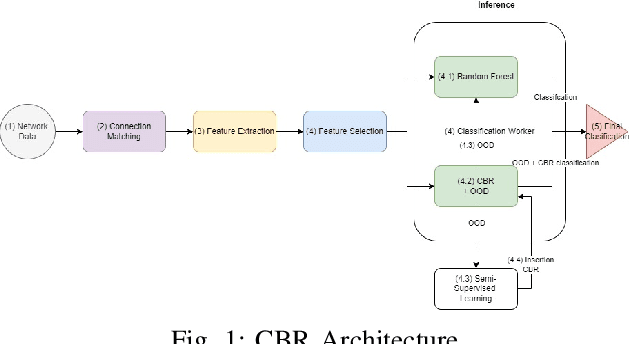
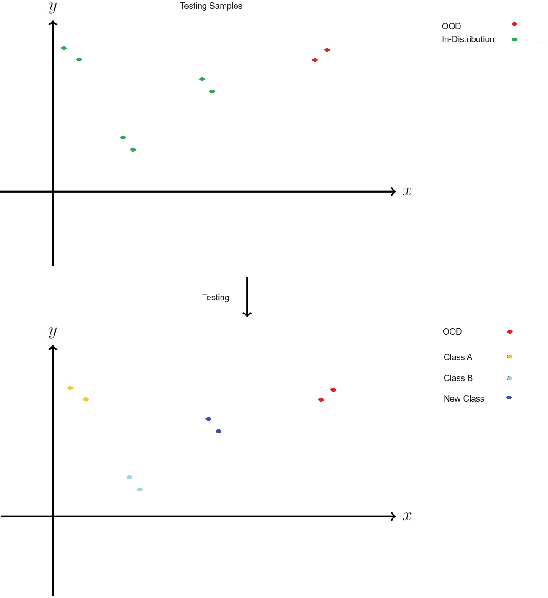
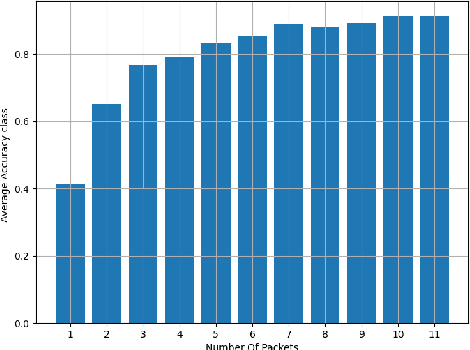
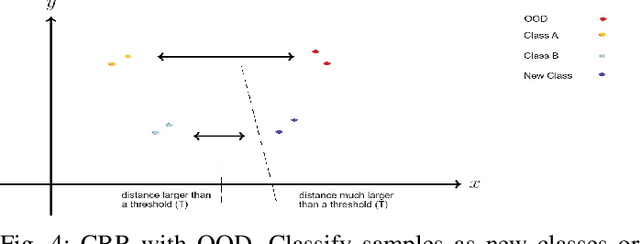
Abstract:Encrypted network traffic Classification tackles the problem from different approaches and with different goals. One of the common approaches is using Machine learning or Deep Learning-based solutions on a fixed number of classes, leading to misclassification when an unknown class is given as input. One of the solutions for handling unknown classes is to retrain the model, however, retraining models every time they become obsolete is both resource and time-consuming. Therefore, there is a growing need to allow classification models to detect and adapt to new classes dynamically, without retraining, but instead able to detect new classes using few shots learning [1]. In this paper, we introduce Adaptive Classification By Retrieval CBR, a novel approach for encrypted network traffic classification. Our new approach is based on an ANN-based method, which allows us to effectively identify new and existing classes without retraining the model. The novel approach is simple, yet effective and achieved similar results to RF with up to 5% difference (usually less than that) in the classification tasks while having a slight decrease in the case of new samples (from new classes) without retraining. To summarize, the new method is a real-time classification, which can classify new classes without retraining. Furthermore, our solution can be used as a complementary solution alongside RF or any other machine/deep learning classification method, as an aggregated solution.
Open Image Content Disarm And Reconstruction
Jul 26, 2023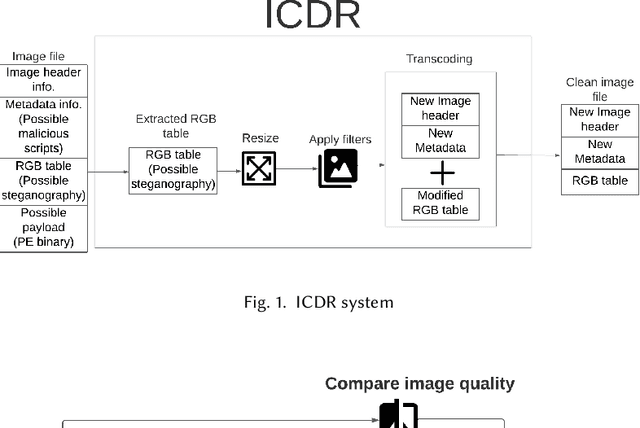
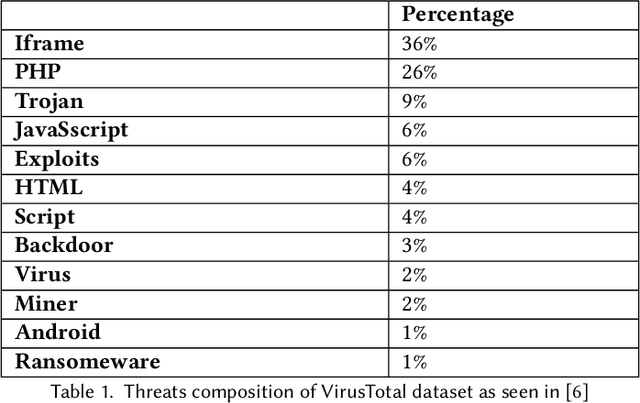
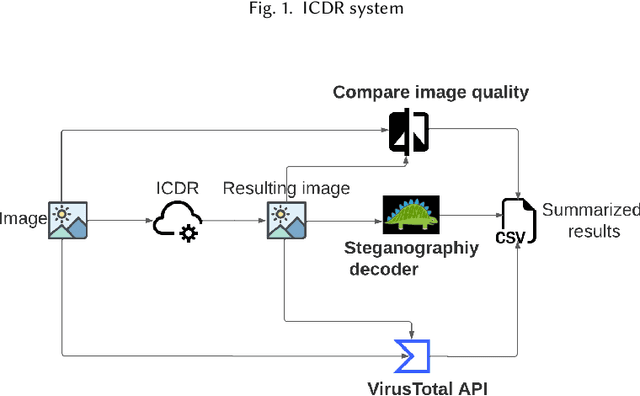

Abstract:With the advance in malware technology, attackers create new ways to hide their malicious code from antivirus services. One way to obfuscate an attack is to use common files as cover to hide the malicious scripts, so the malware will look like a legitimate file. Although cutting-edge Artificial Intelligence and content signature exist, evasive malware successfully bypasses next-generation malware detection using advanced methods like steganography. Some of the files commonly used to hide malware are image files (e.g., JPEG). In addition, some malware use steganography to hide malicious scripts or sensitive data in images. Steganography in images is difficult to detect even with specialized tools. Image-based attacks try to attack the user's device using malicious payloads or utilize image steganography to hide sensitive data inside legitimate images and leak it outside the user's device. Therefore in this paper, we present a novel Image Content Disarm and Reconstruction (ICDR). Our ICDR system removes potential malware, with a zero trust approach, while maintaining high image quality and file usability. By extracting the image data, removing it from the rest of the file, and manipulating the image pixels, it is possible to disable or remove the hidden malware inside the file.
Open-Source Framework for Encrypted Internet and Malicious Traffic Classification
Jun 21, 2022
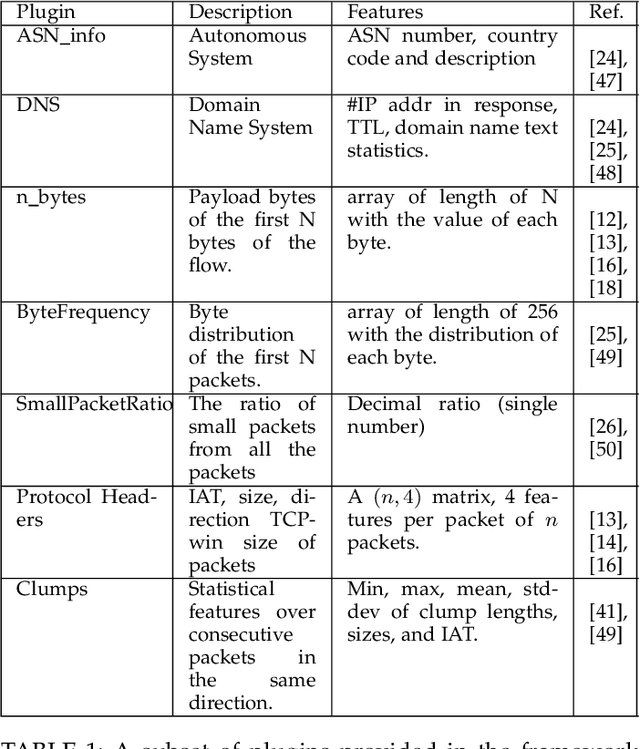
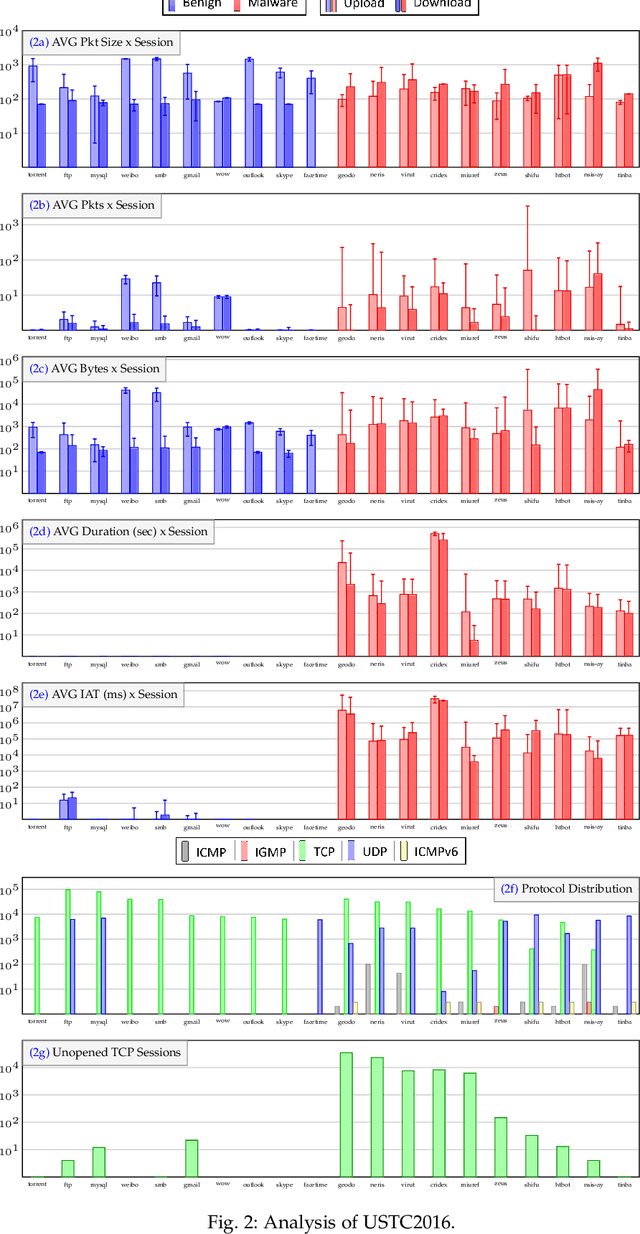
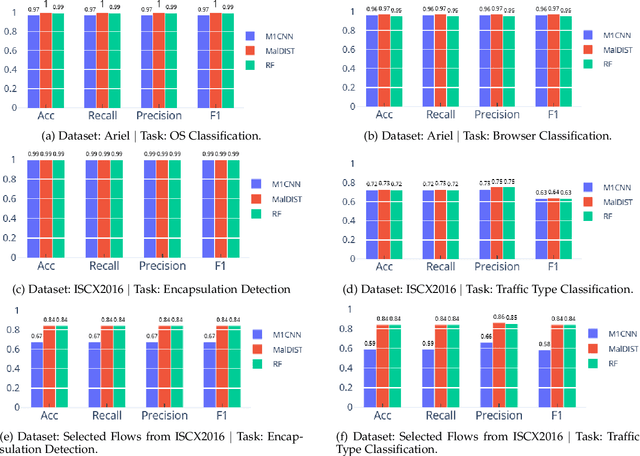
Abstract:Internet traffic classification plays a key role in network visibility, Quality of Services (QoS), intrusion detection, Quality of Experience (QoE) and traffic-trend analyses. In order to improve privacy, integrity, confidentiality, and protocol obfuscation, the current traffic is based on encryption protocols, e.g., SSL/TLS. With the increased use of Machine-Learning (ML) and Deep-Learning (DL) models in the literature, comparison between different models and methods has become cumbersome and difficult due to a lack of a standardized framework. In this paper, we propose an open-source framework, named OSF-EIMTC, which can provide the full pipeline of the learning process. From the well-known datasets to extracting new and well-known features, it provides implementations of well-known ML and DL models (from the traffic classification literature) as well as evaluations. Such a framework can facilitate research in traffic classification domains, so that it will be more repeatable, reproducible, easier to execute, and will allow a more accurate comparison of well-known and novel features and models. As part of our framework evaluation, we demonstrate a variety of cases where the framework can be of use, utilizing multiple datasets, models, and feature sets. We show analyses of publicly available datasets and invite the community to participate in our open challenges using the OSF-EIMTC.
When a RF Beats a CNN and GRU, Together -- A Comparison of Deep Learning and Classical Machine Learning Approaches for Encrypted Malware Traffic Classification
Jun 16, 2022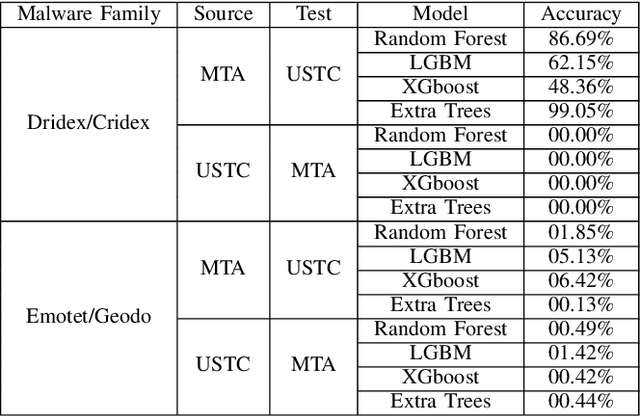
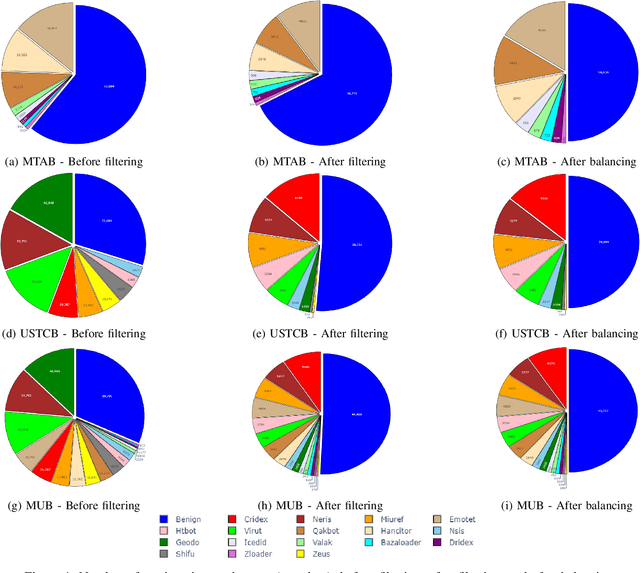
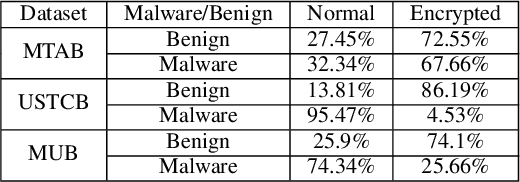
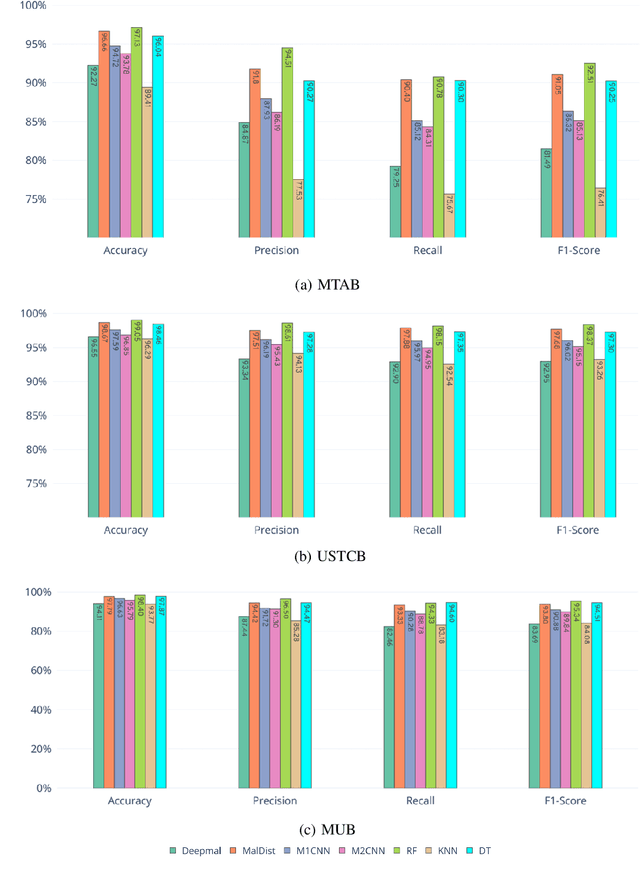
Abstract:Internet traffic classification is widely used to facilitate network management. It plays a crucial role in Quality of Services (QoS), Quality of Experience (QoE), network visibility, intrusion detection, and traffic trend analyses. While there is no theoretical guarantee that deep learning (DL)-based solutions perform better than classic machine learning (ML)-based ones, DL-based models have become the common default. This paper compares well-known DL-based and ML-based models and shows that in the case of malicious traffic classification, state-of-the-art DL-based solutions do not necessarily outperform the classical ML-based ones. We exemplify this finding using two well-known datasets for a varied set of tasks, such as: malware detection, malware family classification, detection of zero-day attacks, and classification of an iteratively growing dataset. Note that, it is not feasible to evaluate all possible models to make a concrete statement, thus, the above finding is not a recommendation to avoid DL-based models, but rather empirical proof that in some cases, there are more simplistic solutions, that may perform even better.
I Know What You Saw Last Minute - Encrypted HTTP Adaptive Video Streaming Title Classification
Jul 21, 2016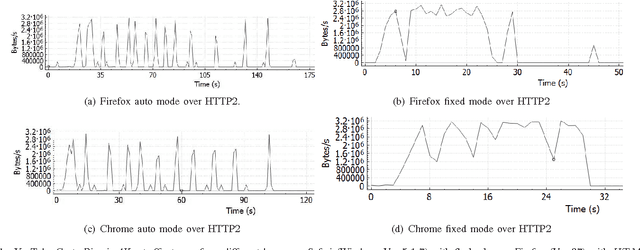

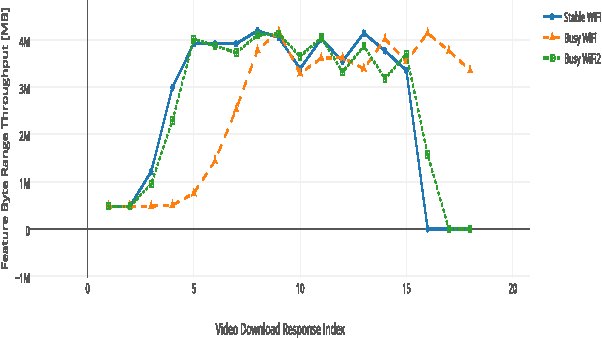
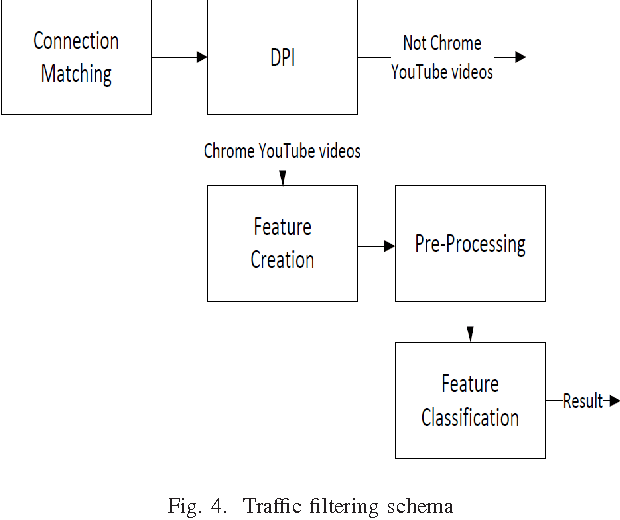
Abstract:Desktops and laptops can be maliciously exploited to violate privacy. There are two main types of attack scenarios: active and passive. In this paper, we consider the passive scenario where the adversary does not interact actively with the device, but he is able to eavesdrop on the network traffic of the device from the network side. Most of the Internet traffic is encrypted and thus passive attacks are challenging. Previous research has shown that information can be extracted from encrypted multimedia streams. This includes video title classification of non HTTP adaptive streams (non-HAS). This paper presents an algorithm for encrypted HTTP adaptive video streaming title classification. We show that an external attacker can identify the video title from video HTTP adaptive streams (HAS) sites such as YouTube. To the best of our knowledge, this is the first work that shows this. We provide a large data set of 10000 YouTube video streams of 100 popular video titles (each title downloaded 100 times) as examples for this task. The dataset was collected under real-world network conditions. We present several machine algorithms for the task and run a through set of experiments, which shows that our classification accuracy is more than 95%. We also show that our algorithms are able to classify video titles that are not in the training set as unknown and some of the algorithms are also able to eliminate false prediction of video titles and instead report unknown. Finally, we evaluate our algorithms robustness to delays and packet losses at test time and show that a solution that uses SVM is the most robust against these changes given enough training data. We provide the dataset and the crawler for future research.
* 9 pages. arXiv admin note: text overlap with arXiv:1602.00489
Real Time Video Quality Representation Classification of Encrypted HTTP Adaptive Video Streaming - the Case of Safari
Feb 19, 2016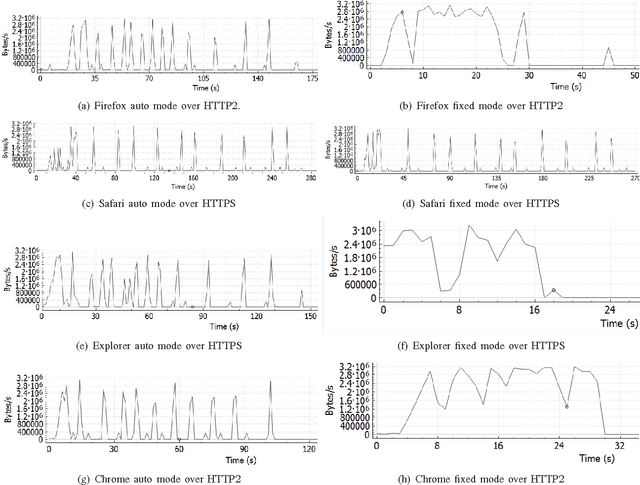

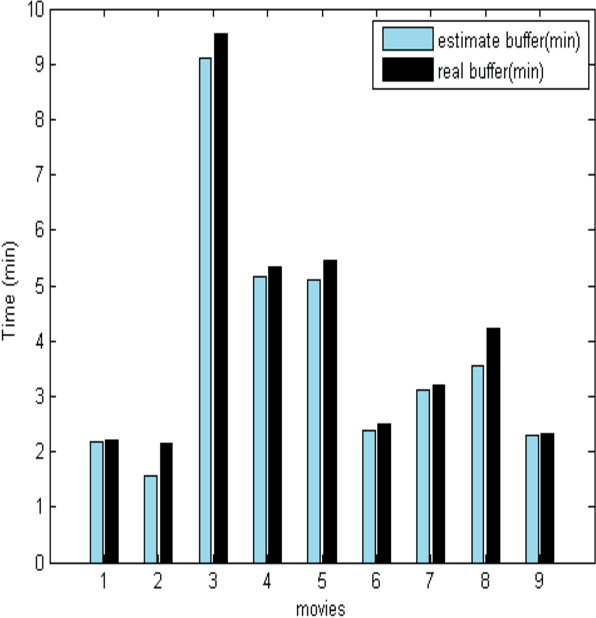
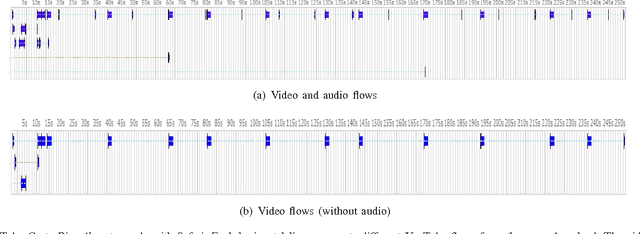
Abstract:The increasing popularity of HTTP adaptive video streaming services has dramatically increased bandwidth requirements on operator networks, which attempt to shape their traffic through Deep Packet Inspection (DPI). However, Google and certain content providers have started to encrypt their video services. As a result, operators often encounter difficulties in shaping their encrypted video traffic via DPI. This highlights the need for new traffic classification methods for encrypted HTTP adaptive video streaming to enable smart traffic shaping. These new methods will have to effectively estimate the quality representation layer and playout buffer. We present a new method and show for the first time that video quality representation classification for (YouTube) encrypted HTTP adaptive streaming is possible. We analyze the performance of this classification method with Safari over HTTPS. Based on a large number of offline and online traffic classification experiments, we demonstrate that it can independently classify, in real time, every video segment into one of the quality representation layers with 97.18% average accuracy.
 Add to Chrome
Add to Chrome Add to Firefox
Add to Firefox Add to Edge
Add to Edge